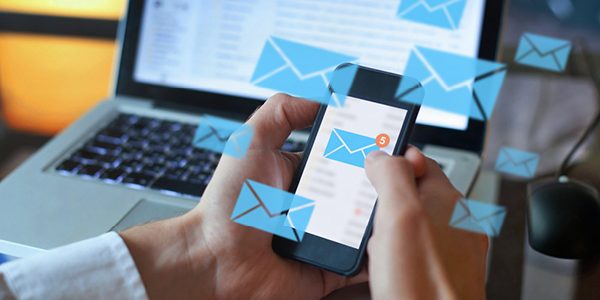Delivering the Personal Touch: Seven Ways to Personalize Your Emails
As consumers are steadily getting bombarded with more and more email messages, personalization in email marketing is becoming increasingly important. Personalized emails are nothing new, but they remain effective on a number of levels:
-
- They stand out in the inbox.
- They’re more likely to be opened by recipients.
- They build customer confidence in your business.
Various studies have backed this up. Around 74 percent of marketers say personalization increases customer engagement (1). Personalized subject lines can generate 50 percent higher open rates (2). What’s more, around 52 percent of consumers say they’re likely to switch brands if a company fails to personalize their messages (3).
Fortunately, thanks to email list segmentation and automation tools, personalizing email campaigns has never been easier. Here are seven personalization strategies you can use to give your email communications a more personal touch.
Personalize the “From” Name
The “from” name is one of the first things recipients see in their inbox. In many email platforms, the “from” field has larger text or is bolded, so it already stands out. In one study, 68 percent of respondents said that the “from” name influenced their decision to open an email (4).
Tip: Using an actual person’s name can increase engagement, so try using the name of the marketing manager or the name of a customer service representative. Test different “from” names to see which ones get the most engagement.
Experiment With Email Forms
Signup forms and other email engagement forms are key to building more relevant email lists. If you haven’t yet gathered information about the age, location, and product interests of subscribers, consider delivering a specific email form to collect additional data. Provide an incentive such as a product discount to encourage participation. Use all this data to divide your email list into specific groups and then create unique email campaigns and automated content for different segments of your audience.
Tip: Send out an email frequency preference form and then refine your email lists based on subscribers’ preferences.
Use the Recipient’s Name Periodically
According to Experian, using the recipient’s first name in the subject line can boost open rates by 26 percent (5). However, it might be best to avoid including the subscriber’s name in every single email; it can come across as creepy if you use their name too often.
Tip: If you don’t have the subscriber’s name yet, add second-person pronouns such as “you” and “your” to your subject lines to make them sound more personal.
Use Behavior Triggers
Behavior-triggered emails help you deliver timely and relevant content to your subscribers. You can send behavioral emails to:
-
- Confirm a purchase.
- Ask for feedback after a purchase.
- Welcome new subscribers after they sign up to your list.
- Recommend similar products based on past purchases.
- Remind customers about an item they’ve left in their shopping cart.
- Say thank you to subscribers at specific times such as their birthday or subscription anniversary.
Tip: Time it right. For example, sending an “abandoned cart” email immediately after someone leaves your site can come across as intrusive and make you look desperate. On the other hand, sending an immediate order confirmation email is professional and reassuring.
Deliver Personalized Offers
You can also use automated emails to offer personalized support and benefits to regular subscribers. For example:
-
- Offer a discount on the recipient’s birthday.
- Give an exclusive product preview to regular customers.
- Provide tips on how to use a product or service after a purchase.
- Offer an exclusive industry survey report to long-time subscribers.
Tip: Think about the needs, desires, and challenges of each segment of your email list and create content that is appealing to each subset of your audience.
Reach Out at the Right Time
There’s no one-size-fits-all solution when it comes to choosing the right time to send emails. Every business and audience is different. However, through your email platform, you should be able to track when subscribers engage more with your emails. Use this information to optimize future send times and hopefully boost future engagement.
Tip: If you have customers located in different time zones, remember to segment your lists accordingly. This not only allows you to send international emails at the right time, but it also gives you the chance to track engagement levels in each location.
Suggest Relevant Products
A simple way to build customer relationships is by providing customized product recommendations based on past purchases. As well as coming across as more relevant to subscribers, the emails will also encourage further purchases.
Tip: Think about which products tie in with previous purchases and consider offering a discount to make the product recommendation seem even more personal. People who are happy with their previous purchases are likely to appreciate these kinds of emails.
Consumers are becoming increasingly frustrated by the amount of email messages they receive; they’re looking for brands that understand their unique needs and speak to them on a more personal level. This is why personalizing emails is now an essential strategy for any business that wants to stand out from the competition.
To make your email campaigns more engaging, try to use a combination of the above personalization techniques. When you’re guided by the behavior and preferences of each email recipient, you can craft more meaningful, appealing email content that will ultimately give your business the competitive edge.







